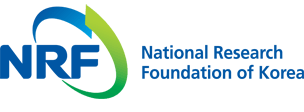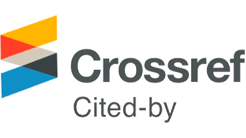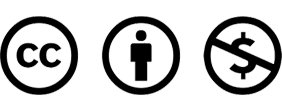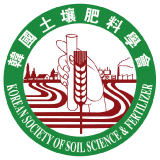Review
Adviento-Borbe MAA, Linquist B. 2016. Assessing fertilizer N placement on CH4 and N2O emissions in irrigated rice systems. Geoderma 266:40-45. https://doi.org/10.1016/j.geoderma.2015.11.034
10.1016/j.geoderma.2015.11.034Aronson EL, Helliker BR. 2010. Methane flux in non-wetland soils in response to nitrogen addition: A meta-analysis. Ecology 91:3242-3251. https://doi.org/10.1890/09-2185.1
10.1890/09-2185.121141185Awad YM, Wang J, Igalavithana AD, Tsang DCW, Kim KH, Lee SS, Ok YS. 2018. Biochar effects on rice paddy: Meta-analysis. Adv. Agron. 148:1-32. https://doi.org/10.1016/bs.agron.2017.11.005
10.1016/bs.agron.2017.11.005Baek N, Pia HI, Park SW, Shin ES, Lee SI, Choi WJ. 2024. Too much biochar is not better than nothing. Korean J. Soil Sci. Fertil. 57:238-244. https://doi.org/10.7745/KJSSF.2024.57.3.238
10.7745/KJSSF.2024.57.3.238Banger K, Tian H, Lu C. 2012. Do nitrogen fertilizers stimulate or inhibit methane emissions from rice fields? Glob. Change Biol. 18:3259-3267. https://doi.org/10.1111/j.1365-2486.2012.02762.x
10.1111/j.1365-2486.2012.02762.x28741830Bodelier PL, Laanbroek HJ. 2004. Nitrogen as a regulatory factor of methane oxidation in soils and sediments. FEMS Microbiol. Ecol. 47:265-277. https://doi.org/10.1016/S0168-6496(03)00304-0
10.1016/S0168-6496(03)00304-019712315Cai F, Feng Z, Zhu L. 2018. Effects of biochar on CH4 emission with straw application on paddy soil. J. Soils Sediments 18:599-609. https://doi.org/10.1007/s11368-017-1761-x
10.1007/s11368-017-1761-xChen D, Liu X, Bian R, Cheng K, Zhang X, Zheng J, Joseph S, Crowley D, Pan G, Li L. 2018. Effects of biochar on availability and plant uptake of heavy metals - A meta-analysis. J. Environ. Manag. 222:76-85. https://doi.org/10.1016/j.jenvman.2018.05.004
10.1016/j.jenvman.2018.05.00429804035Dong D, Yang M, Wang C, Wang H, Li Y, Luo J, Wu W. 2013. Responses of methane emissions and rice yield to applications of biochar and straw in a paddy field. J. Soils Sediments 13:1450-1460. https://doi.org/10.1007/s11368-013-0732-0
10.1007/s11368-013-0732-0Gaihre YK, Tirol-Padre A, Wassmann R, Aquino E, Pangga GV, Sta-Cruz PC. 2011. Spatial and temporal variations in methane fluxes from irrigated lowland rice fields. Philipp. Agric. Sci. 94:335-342.
Han X, Sun X, Wang C, Wu M, Dong D, Zhong T, Thies JE, Wu W. 2016. Mitigating methane emission from paddy soil with rice-straw biochar amendment under projected climate change. Sci. Rep. 6:24731. https://doi.org/10.1038/srep24731
10.1038/srep2473127090814PMC4835783Haque ANA, Uddin MK, Sulaiman MF, Amin AM, Hossain M, Solaiman ZM, Mosharrof M. 2021. Biochar with alternate wetting and drying irrigation: A potential technique for paddy soil management. Agriculture 11:367. https://doi.org/10.3390/agriculture11040367
10.3390/agriculture11040367Hu A, Lu Y. 2015. The differential effects of ammonium and nitrate on methanotrophs in rice field soil. Soil Biol. Biochem. 85:31-38. https://doi.org/10.1016/j.soilbio.2015.02.033
10.1016/j.soilbio.2015.02.033Iboko MP, Dossou-Yovo ER, Obalum SE, Oraegbunam CJ, Diedhiou S, Brümmer C, Témé N. 2023. Paddy rice yield and greenhouse gas emissions: Any trade-off due to co-application of biochar and nitrogen fertilizer? A systematic review. Heliyon 9:e22132. https://doi.org/10.1016/j.heliyon.2023.e22132
10.1016/j.heliyon.2023.e2213238045115PMC10692810Jeffery S, Verheijen FGA, Kammann C, Abalos D. 2016. Biochar effects on methane emissions from soils: A meta-analysis. Soil Biol. Biochem. 101:251-258. https://doi.org/10.1016/j.soilbio.2016.07.021
10.1016/j.soilbio.2016.07.021Kang SW, Yun JJ, Park JH, Cheong YH, Park JH, Seo DC, Cho JS. 2021. Effects of biochar and barley straw application on the rice productivity and greenhouse gas emissions of paddy field. Appl. Biol. Chem. 64:92. https://doi.org/10.1186/s13765-021-00666-7
10.1186/s13765-021-00666-7Kasozi GN, Zimmerman AR, Nkedi-Kizza P, Gao B. 2010. Catechol and humic acid sorption onto a range of laboratory-produced black carbons (biochars). Environ. Sci. Technol. 44:6189-6195. https://doi.org/10.1021/es1014423
10.1021/es101442320669904Kim J, Yoo G, Kim D, Ding W, Kang H. 2017. Combined application of biochar and slow-release fertilizer reduces methane emission but enhances rice yield by different mechanisms. Appl. Soil Ecol. 117-118:57-62. https://doi.org/10.1016/j.apsoil.2017.05.006
10.1016/j.apsoil.2017.05.006Lee DW, Lee YN, Jeong YJ, Yun JJ, Shim JH, Jeon SH, Lee YH, Kwon SI. 2023a. Effect of biochar derived from greenhouse crop residue on lettuce growth and soil chemical properties. Korean J. Soil Sci. Fert. 56:386-397. https://doi.org/10.7745/KJSSF.2023.56.4.386
10.7745/KJSSF.2023.56.4.386Lee JM, Jeong HC, Gwon HS, Lee HS, Park HR, Kim GS, Park DG, Lee SI. 2023b. Effects of biochar on methane emissions and crop yields in East Asian paddy fields: A regional scale meta-analysis. Sustainability 15:9200. https://doi.org/10.3390/su15129200
10.3390/su15129200Liu Y, Yang M, Wu Y, Wang H, Chen Y, Wu W. 2011. Reducing CH4 and CO2 emissions from waterlogged paddy soil with biochar. J. Soils Sediments. 11:930-939. https://doi.org/10.1007/ s11368-011-0376-x
10.1007/s11368-011-0376-xMukherjee A, Zimmerman AR. 2013. Organic carbon and nutrient release from a range of laboratory-produced biochars and biochar-soil mixtures. Geoderma 193:122-130. https://doi.org/10.1016/j.geoderma.2012.10.002
10.1016/j.geoderma.2012.10.002Nan Q, Wang C, Wang H, Yi Q, Wu W. 2020. Mitigating methane emission via annual biochar amendment pyrolyzed with rice straw from the same paddy field. Sci. Total Environ. 746:141351. https://doi.org/10.1016/j.scitotenv.2020.141351
10.1016/j.scitotenv.2020.14135132768791Nan Q, Xin L, Qin Y, Waqas M, Wu W. 2021. Exploring long-term effects of biochar on mitigating methane emissions from paddy soil: A review. Biochar 3:125-134. https://doi.org/10.1007/ s42773-021-00096-0
10.1007/s42773-021-00096-0Nan Q, Fang C, Cheng L, Hao W, Wu W. 2022. Elevation of NO3−N from biochar amendment facilitates mitigating paddy CH4 emission stably over seven years. Environ. Pollut. 295:118707. https://doi.org/10.1016/j.envpol.2021.118707
10.1016/j.envpol.2021.11870734923062Novair SB, Cheraghi M, Faramarzi F, Lajayer BA, Senapathi V, Astatkie T, Price GW. 2023. Reviewing the role of biochar in paddy soils: An agricultural and environmental perspective. Ecotox. Environ. Safe. 263:115228. https://doi.org/10.1016/j.ecoenv.2023.115228
10.1016/j.ecoenv.2023.11522837423198Pia HI, Baek N, Park SW, Shin ES, Lee SI, Kim HY, Tang S, Cheng W, Kwak JH, Park HJ, Choi WJ. 2024. Luxury application of biochar does not enhance rice yield and methane mitigation: a review and data analysis. J. Soils Sediments 24: 2652-2668. https://doi.org.10.1007/s11368-024-03830-w
10.1007/s11368-024-03830-wShaukat M, Samoy-Pascual K, Maas EDvL, Ahmad A. 2019. Simultaneous effects of biochar and nitrogen fertilization on nitrous oxide and methane emissions from paddy rice. J. Environ. Manag. 248:109242. https://doi.org/10.1016/j.jenvman.2019.07.013
10.1016/j.jenvman.2019.07.01331315074Song HJ, Park SY, Chae HG, Kim PJ, Lee JG. 2024. Benefits of organic amendments on soil C stock may be offset by increased methane flux in rice paddy field. Agric. Ecosyst. Environ. 359:108742. https://doi.org/10.1016/j.agee.2023.108742
10.1016/j.agee.2023.108742Spokas KA, Baker JM, Reicosky DC. 2010. Ethylene: potential key for biochar amendment impacts. Plant Soil 333:443-452. https://doi.org/10.1007/s11104-010-0359-5
10.1007/s11104-010-0359-5Sriphirom P, Chidthaisong A, Yagi K, Tripetchkul S, Towprayoon S. 2019. Evaluation of biochar applications combined with alternate wetting and drying (AWD) water management in rice field as a methane mitigation option for farmers' adoption. Soil Sci. Plant Nutr. 66:235-246. https://doi.org/10.1080/00380768.2019.1706431
10.1080/00380768.2019.1706431Sui Y, Gao J, Liu C, Zhang W, Lan Y, Li S, Meng J, Xu Z, Tang L. 2016. Interactive effects of straw-derived biochar and N fertilization on soil C storage and rice productivity in rice paddies of Northeast China. Sci. Total Environ. 544:203-210. https://doi.org/10.1016/j.scitotenv.2015.11.079
10.1016/j.scitotenv.2015.11.07926657366Sun B, Zhao H, Lü Y, Lu F, Wang X. 2016. The effects of nitrogen fertilizer application on methane and nitrous oxide emission/uptake in Chinese croplands. J. Integr. Agric. 15:440-450. https://doi.org/10.1016/S2095-3119(15)61063-2
10.1016/S2095-3119(15)61063-2Wang S, Gao B, Zimmerman AR, Li Y, Ma L, Harris WG, Migliaccio KW. 2015. Physicochemical and sorptive properties of biochars derived from woody and herbaceous biomass. Chemosphere 134:257-262. https://doi.org/10.1016/j.chemosphere.2015.04.062
10.1016/j.chemosphere.2015.04.06225957037Wang Y, Bai R, Di HJ, Mo LY, Han B, Zhang LM, He J. 2018. Differentiated mechanisms of biochar mitigating straw-induced greenhouse gas emissions in two contrasting paddy soils. Front. Microbial. 9:2566. https://doi.org/10.3389/fmicb.2018.02566
10.3389/fmicb.2018.0256630483220PMC6243033Wang C, Shen J, Liu J, Qin H, Yuan Q, Fan F, Hu Y, Wang J, Wei W, Li Y, Wu J. 2019. Microbial mechanisms in the reduction of CH4 emission from double rice cropping system amended by biochar: A four-year study. Soil Biol. Biochem. 135:251-263. https://doi. org/10.1016/j.soilbio.2019.05.012
10.1016/j.soilbio.2019.05.012Wei Z, Hoffland E, Zhuang M, Hellegers P, Cui Z. 2021. Organic inputs to reduce nitrogen export via leaching and runoff: A global meta-analysis. Environ. Pollut. 291:118176. https://doi.org/10.1016/j.envpol.2021.118176
10.1016/j.envpol.2021.11817634563844Yagi K, Sriphirom P, Cha-un N, Fusuwankaya K, Chidthaisong A, Damen B, Towprayoon S. 2020. Potential and promisingness of technical options for mitigating greenhouse gas emissions from rice cultivation in Southeast Asian countries. Soil Sci. Plant Nutr. 66:37-49. https://doi.org/10.1080/00380768.2019.1683890
10.1080/00380768.2019.1683890Yang S, Xiao Y, Sun X, Ding J, Jiang Z, Xu J. 2019. Biochar improved rice yield and mitigated CH4 and N2O emissions from paddy field under controlled irrigation in the Taihu Lake Region of China. Atmos. Environ. 200:69-77. https://doi.org/10.1016/j.atmosenv.2018.12.003
10.1016/j.atmosenv.2018.12.003Yang Y, Tong T, Chen J, Liu Y, Xie S. 2020. Ammonium impacts methane oxidation and methanotrophic community in freshwater dediment. Front. Bioeng. Biotechnol. 8:250. https://doi.org/10.3389/fbioe.2020.00250
10.3389/fbioe.2020.0025032296693PMC7137091Yi YS, Cho HJ, Heo JY, Lee YH. 2019. Effects of wood-derived biochar application on soil chemical properties and growth of lettuce (Lactuca sativa L.). Korean J. Soil Sci. Fert. 52:457-466. https://doi.org/10.7745/KJSSF.2019.52.4.457
10.7745/KJSSF.2019.52.4.457Zhang A, Cui L, Pan G, Li L, Hussain Q, Zhang X, Zheng J, Crowley D. 2010. Effect of biochar amendment on yield and methane and nitrous oxide emissions from a rice paddy from Tai Lake plain, China. Agric. Ecosyst. Environ. 139:469-475. https://doi.org/10.1016/j.agee.2010.09.003
10.1016/j.agee.2010.09.003Zhang X, Xia J, Pu J, Cai C, Tyson GW, Yuan Z, Hu S. 2019a. Biochar-mediated anaerobic oxidation of methane. Environ. Sci. Technol. 53:6660-6668. https://doi.org/10.1021/acs.est.9b01345
10.1021/acs.est.9b0134531099557Zhang Y, Xu X, Zhang P, Zhao L, Qiu H, Cao X. 2019b. Pyrolysis-temperature depended quinone and carbonyl groups as the electron accepting sites in barley grass derived biochar. Chemosphere 232:273-280. https://doi.org/10.1016/j.chemosphere.2019.05.225
10.1016/j.chemosphere.2019.05.22531154188Zhao X, Pu C, Ma ST, Liu SL, Xue JF, Wang X, Wang YQ, Li SS, Lal R, Chen F, Zhang HL. 2019. Management-induced greenhouse gases emission mitigation in global rice production. Sci. Total Environ. 649:1299-1306. https://doi.org/10.1016/j.scitotenv.2018.08.392
10.1016/j.scitotenv.2018.08.39230308900- Publisher :Korean Society of Soil Science and Fertilizer
- Publisher(Ko) :한국토양비료학회
- Journal Title :Korean Journal of Soil Science and Fertilizer
- Journal Title(Ko) :한국토양비료학회 학회지
- Volume : 58
- No :1
- Pages :133-143
- Received Date : 2025-01-03
- Revised Date : 2025-01-22
- Accepted Date : 2025-01-23
- DOI :https://doi.org/10.7745/KJSSF.2025.58.1.133
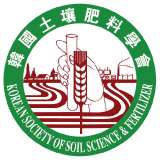


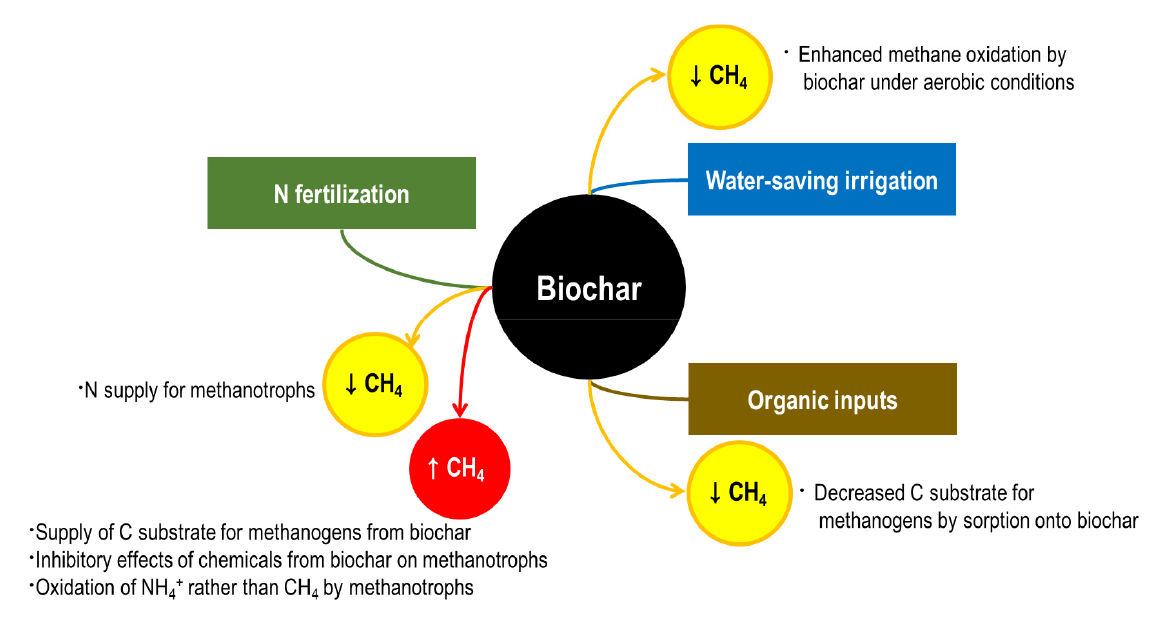
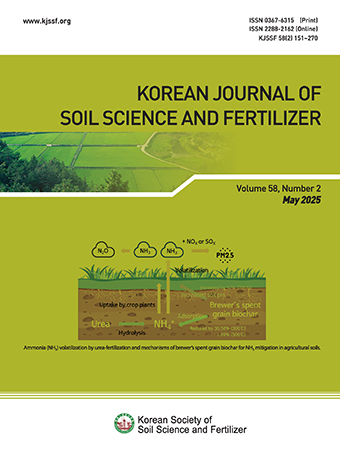 Korean Journal of Soil Science and Fertilizer
Korean Journal of Soil Science and Fertilizer
